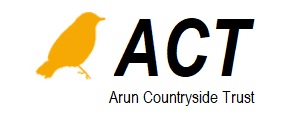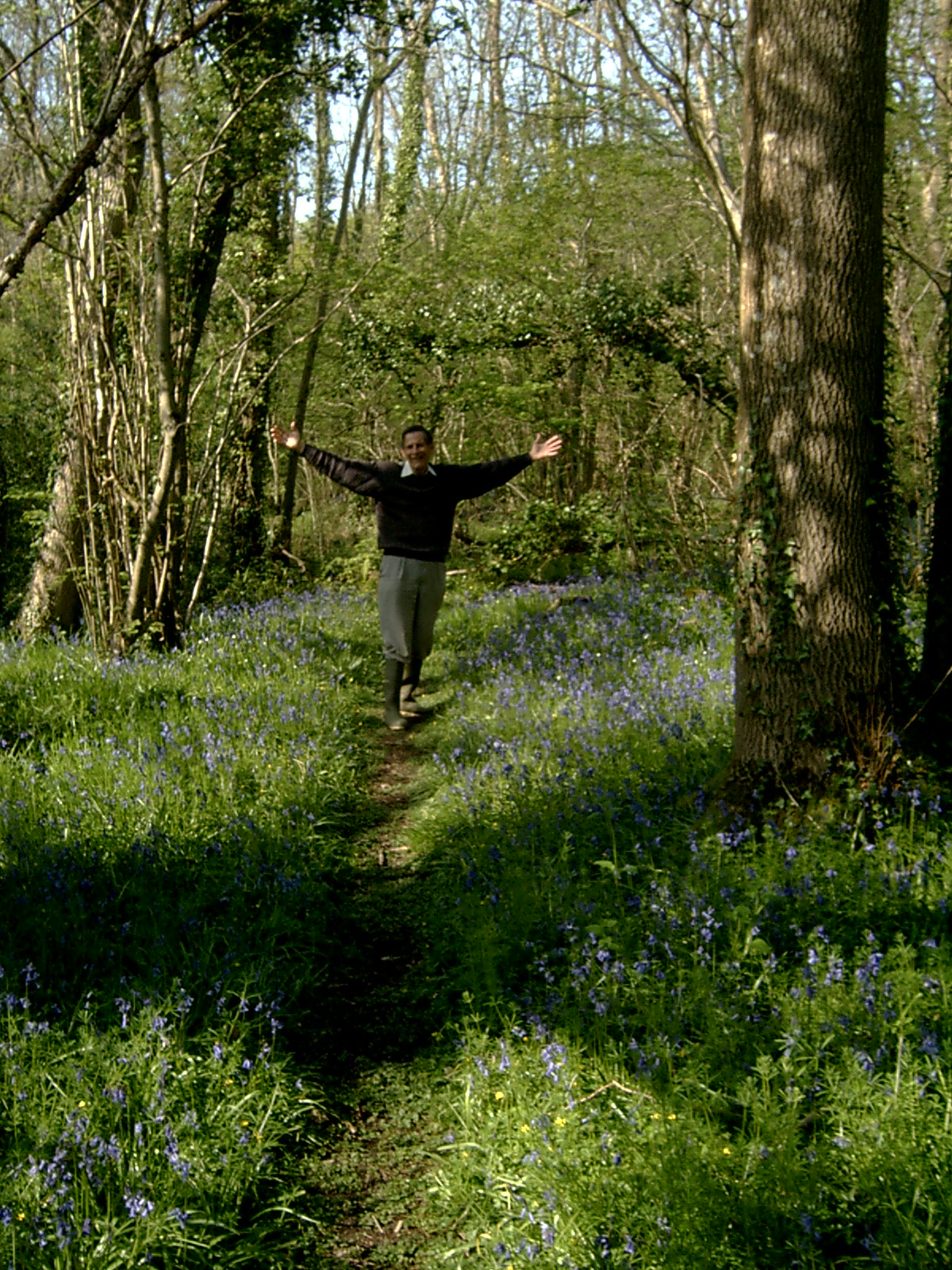Spring has finally sprung and what a time to visit Binsted Woods, for the woodland floor is transforming into a luxuriant carpet of colour. Lush emerald green leaves have burst from the dull, muddy earth and support an explosion of flowers unrivalled by any other habitat at this time of year.
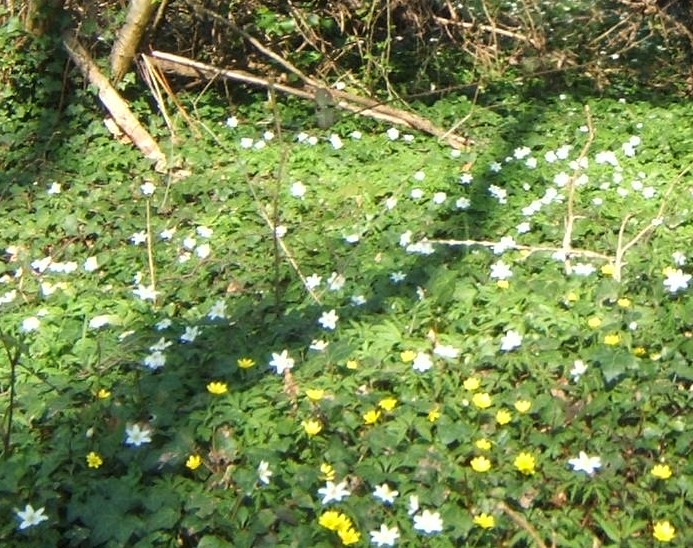
Elsewhere native plants are enjoying a leisurely start to the season, waiting for the sun’s rays to strengthen and the days to become longer.
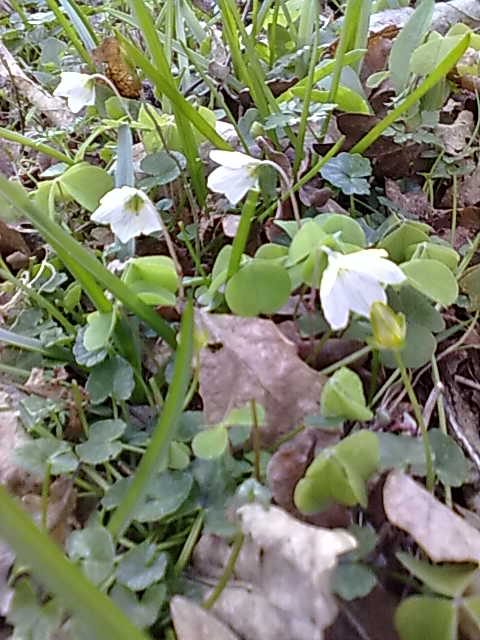
Woodland plants, however, must ‘cash in quickly’ and utilise the weak spring sunshine to the full before the trees come into leaf and cast a heavy shade.
One of the first plants to come into flower after the delicate Snowdrops and Wild Daffodils is the Wood Anemone (left); and this plant saves energy by deception. It gives off a faint scent to attract insects to transfer pollen; yet, it cheats and produces no nectar for their reward. On the right is another little white woodland flower Wood Sorrel, sometimes mistaken for a wood anemone, but look closely and it's quite different.
Another plant producing a scent is Ramsons, or Wild Garlic. Crush these leaves and you will be in no doubt as to its identification. A plant worth searching for is Town-hall Clock – so called because four of its five small, green flowers are placed facing separate directions just as a town hall clock, with the fifth facing upwards. Even if this gem proves to be elusive...
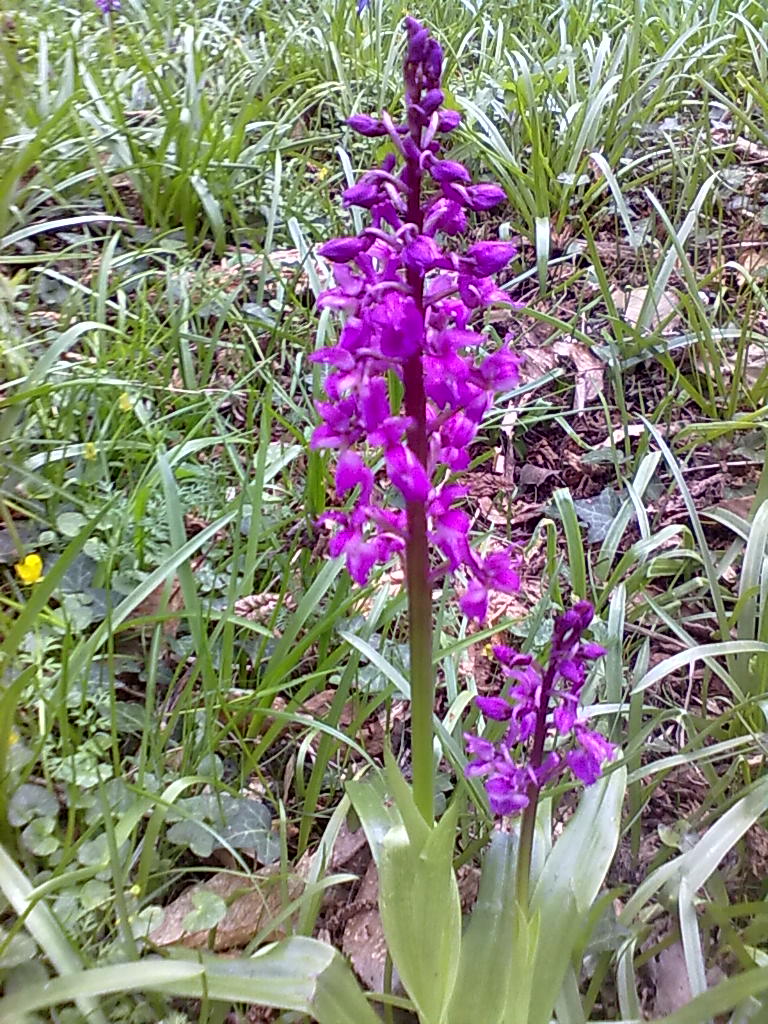 Those of you who visit the woods frequently cannot fail to be enthralled by the sheer variety of plants present, such as showy orchids (left: Early Purple), shy violets, ancient ferns and sedges and many more. Binsted Woods boasts a high number of species that are indicative of continual woodland cover – known as Ancient Woodland Indicators. This list of species was compiled in order to aid identification of ancient and semi-natural woodland in Britain, so that such woods could be given sympathetic treatment.
Those of you who visit the woods frequently cannot fail to be enthralled by the sheer variety of plants present, such as showy orchids (left: Early Purple), shy violets, ancient ferns and sedges and many more. Binsted Woods boasts a high number of species that are indicative of continual woodland cover – known as Ancient Woodland Indicators. This list of species was compiled in order to aid identification of ancient and semi-natural woodland in Britain, so that such woods could be given sympathetic treatment.
A host of insects rely on this early flowering feast. Queen bees emerging from hibernation collect nectar and pollen to start their colonies. Early flies, wasps and butterflies visit the flowers gathering sustenance – and what’s more; insects and humans alike still have the grand finale to look forward to - the Binsted Bluebells!
PLEASE DO send us your photos of spring flowers to add to our collection - thank you. If you want to know what any flower is called and how it fits in to MAVES nature, just send us a picture and we will tell you about it.
